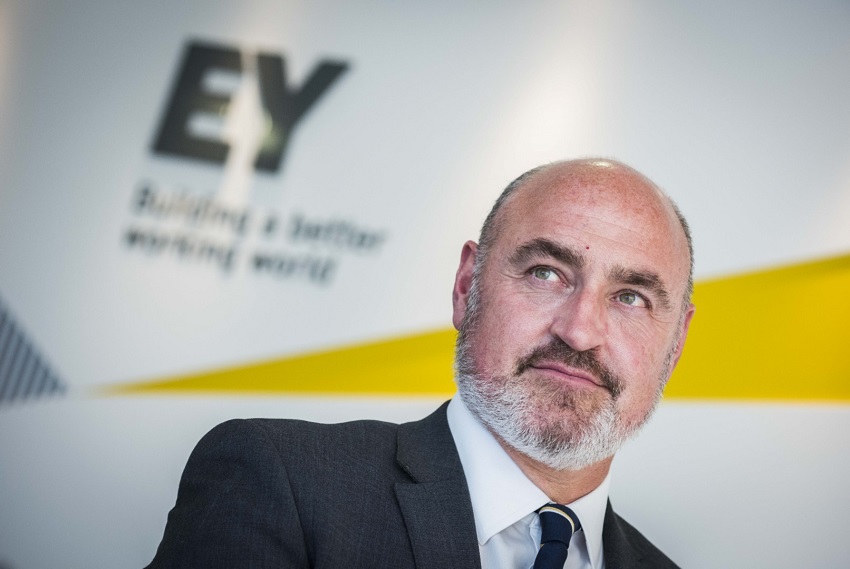EY: Scotland bucks UK and Europe trend to secure increased inward investment

Ally Scott
Scotland bucked a UK and European trend by attracting more Foreign Direct Investment (FDI) projects in 2020 than in 2019, while the country has reached its highest-ever attractiveness level for investment and bolstered its position as the UK’s most attractive FDI location outside London, according to the latest EY report.
EY’s 2021 Scotland Attractiveness Survey has revealed that Scotland secured 6% more FDI projects in 2020 (107) than in 2019 (101), against a backdrop of UK FDI projects falling 12% (from 1,109 to 975) and European FDI projects falling by 13% (from 6,412 to 5,578) over the same period.
The rise in projects into Scotland within a shrinking UK marketplace saw Scotland’s share of all UK projects increase from 9.1% in 2019 to 11% in 2020 – a proportion exceeded only once in the past decade (2015). Scotland has been the UK location with the second highest number of overseas-backed projects – after London – in every year since 2014.
New projects in Scotland – as opposed to reinvestments – have bounced back to their highest level for five years (61 projects), after three consecutive years of decline. This performance ensured Scotland increased its market share of all new projects coming into the UK from 5.9% in 2019 to 8.4% in 2020.
Scotland’s ‘big three’ cities (Edinburgh, Glasgow and Aberdeen) were all ranked in the UK’s top ten cities for FDI projects outside London, with Edinburgh placed first, while digital tech and agri-food topped the sector leader-board.
Fifteen per cent of investors surveyed by EY as part of the research said that Scotland was the most attractive part of the UK in which to invest – double the proportion saying the same in 2019 (7%) and, compared to the rest of the UK, behind only London (25%).
Ally Scott, EY Scotland managing partner, said: “Amid arguably the most challenging environment for FDI in living memory, it’s clear that Scotland has put in an impressive performance over the past year.
“Beneath the headline figures, there are further reasons for optimism almost everywhere you look: the one-third rise in ‘new’ projects; the diverse spread of sectors attracting FDI – with digital tech leading the way; or, compared to last year, the fact that more than twice as many investors cited Scotland as the UK’s leading FDI destination. With investment intentions into the UK overall also at a record high, there’s every prospect of Scotland winning a healthy proportion of a resilient pipeline of investments in the coming months and years.
“Scotland has now narrowed the gap significantly with London, which continues to lead as the most attractive region to establish operations. The scale of this two-year shift is illustrated by London’s vote as most attractive region almost halving since 2019, while Scotland’s has more than doubled. As well as being firmly established as the UK’s second biggest recipient of FDI projects behind London, Scotland is now also in clear second place in terms of attractiveness, well ahead of third-placed South-East England.”
He added: “But this is no time for Scotland to rest on its laurels. As we look to the economic recovery from COVID-19, constructive, practical engagement between business and both the UK and Scottish governments remains key to shaping the right policies, business environment and incentives to give investors continued confidence to invest.
“While our findings suggest Scotland is getting a lot right, the global market for FDI will only become more competitive, making it vital to keep listening and responding to what investors want. Our report shows that this includes the availability and skills of the local workforce, the strength of business networks locally, and access to regional grants and incentives for investment and R&D. There is also a rising focus on sustainability and cleantech – areas where Scotland’s strength is exemplified by COP26 taking place in Glasgow later this year.
“Whatever the challenges, there’s no denying the good news in this report.
“Scotland bucked the trend and, in doing so, laid down a strong base for future FDI. Now it’s time to build on that and to capitalise on the attractiveness of our country as a place to do business.”
Data on employment involved in each FDI project is less consistent and so levels associated are more volatile from year-to-year, due to relying on reported figures. Available figures indicate Scottish jobs generated by FDI projects in 2020 was 4,499, slightly below a decade-long average of 4,650 jobs a year. This represents a decline of 30.1% from 2019 (with the UK falling 31% in the same period).
However, 2019 was the high point of the decade for FDI generated employment in Scotland. As a result, Scotland’s total UK employment share generated by FDI fell from 17.5% in 2019 to 16.1% in 2020 – but remains Scotland’s third-highest proportion of UK FDI employment over the ten years.
The three leading sectors generating inward investments into Scotland in 2020 were digital technology (19 projects), agri-food (14 projects) and business services (11). These diverse sectors overtook last year’s top sector – machinery and equipment – which fell out of the top five (with four projects). Oil and gas ranked fourth (nine projects), with utility supply fifth (eight projects) – underlining the continued importance of energy projects to Scotland in 2020.
Sales and service projects (49 projects) were the leading activity for Scottish FDI, followed by research and development (R&D) (23 projects) in second place. Manufacturing projects slipped to third with 17 projects, from 32 projects in 2019. The biggest percentage increase was in logistics projects, which more than trebled from three projects in 2019 to ten in 2020, taking fourth place.
The US remained the single biggest originator of FDI projects into Scotland, accounting for 35.5% (38 projects) – slightly above the US proportion of the overall UK market. Ireland was the second biggest source of projects into Scotland with ten projects, followed by the Netherlands with eight.
Scotland’s ‘big three’ cities were all ranked in the UK’s top 10 cities for FDI projects outside of London in 2020. Combined, these three cities accounted for 70 of the 107 projects secured by Scotland in 2020: Edinburgh – 1st place, (36 projects); Glasgow – 5th place, (23 projects); and, Aberdeen – 7th place, (13 projects). Edinburgh overtook Manchester (34 projects) to record the highest number of projects outside London (383).
Scotland’s strong performance is set against a backdrop of resilience for the UK’s attractiveness as an investment destination, with the country ranking second in Europe for total inbound FDI projects in 2020 and expanding its share of the European FDI market.
While the UK again missed out on Europe’s top spot for FDI – for only the second year in the survey’s two-decade history – the gap was closed on 2019’s first-time leader France. In 2020, the UK secured 975 projects (down 12% from 2019’s 1,109 projects); France hosted 985 projects (down 18% from 2019’s 1,197 projects). Germany ranked third with 930 projects (down 4% from 2019’s 971).
Overall, Europe saw a 13% fall in projects, which helped the UK expand its market share of FDI for the second successive year, from 16.6% in 2018 and 17.3% in 2019, to 17.5% in 2020. Meanwhile, London reclaimed its status as Europe’s most attractive city for investment, overtaking Paris.
This latest survey found the UK is now perceived to be Europe’s most attractive destination for investment, while 41% of survey respondents plan to invest in the UK in the next 12 months – the UK’s highest ever score on this question, up from 31% in spring 2020 and 23% in 2019.










